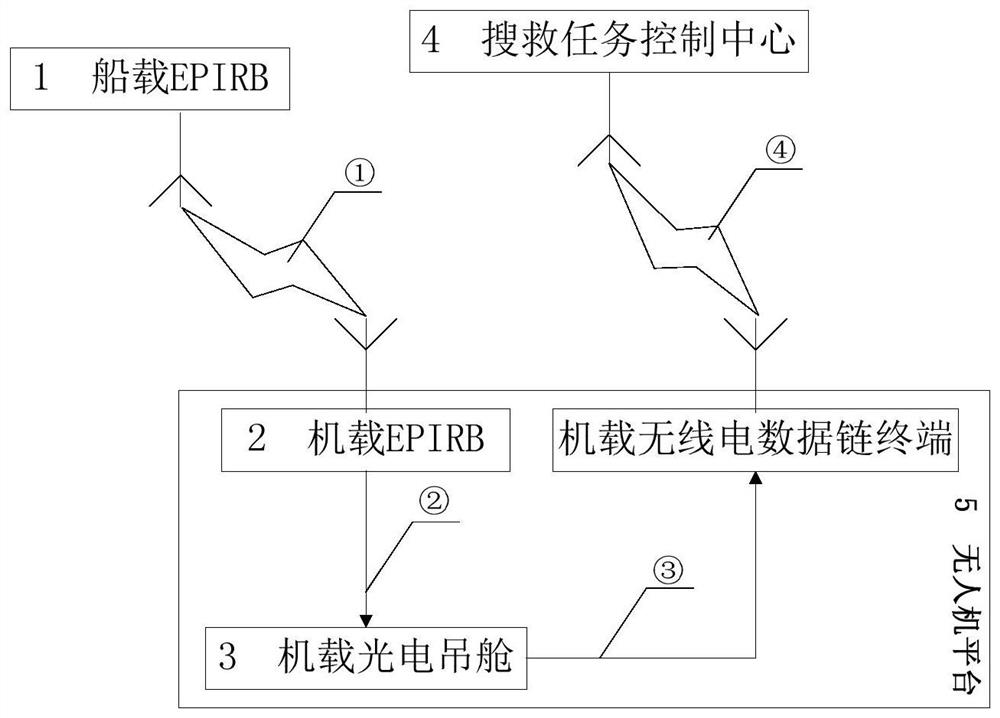Method for implementing search and rescue by using unmanned aerial vehicle-mounted EPIRB and photoelectric pod equipment
An optoelectronic pod, search and rescue technology, which is applied in the direction of using optical devices, equipment indicating ships, motor vehicles, etc., can solve the problems of low rescue position positioning accuracy, delaying the best rescue timing, positioning accuracy errors, etc., to reduce rescue efforts. The effect of searching range, shortening waiting time for rescue, and improving positioning accuracy
- Summary
- Abstract
- Description
- Claims
- Application Information
AI Technical Summary
Problems solved by technology
Method used
Image
Examples
Embodiment Construction
[0020] The principles and features of the present invention are described below in conjunction with the accompanying drawings, and the examples given are only used to explain the invention, and are not intended to limit the scope of the present invention.
[0021] A search and rescue method using unmanned aerial vehicle-mounted EPIRB and photoelectric pod equipment. When the unmanned aerial vehicle system is loaded with airborne EPIRB equipment and carries out maritime inspection tasks, the airborne EPIRB is used to directly receive the equipment within the range of action of the air patrol sea area. The ship-borne Emergency Position Indicating Radio Beacon (EPIRB) sends a distress alarm signal with a working frequency of 406MHz through manual or automatic activation, and at the same time combines the image data obtained by the airborne photoelectric pod equipment to implement optical image high-precision positioning of the ship in distress , and can transmit the image data of ...
PUM
 Login to View More
Login to View More Abstract
Description
Claims
Application Information
 Login to View More
Login to View More - R&D
- Intellectual Property
- Life Sciences
- Materials
- Tech Scout
- Unparalleled Data Quality
- Higher Quality Content
- 60% Fewer Hallucinations
Browse by: Latest US Patents, China's latest patents, Technical Efficacy Thesaurus, Application Domain, Technology Topic, Popular Technical Reports.
© 2025 PatSnap. All rights reserved.Legal|Privacy policy|Modern Slavery Act Transparency Statement|Sitemap|About US| Contact US: help@patsnap.com

